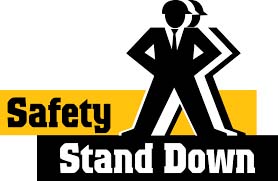A safety stand-down is an event where employers engage directly with employees about safety. They provide an opportunity for the workforce to take a break and focus on safety-related discussions. These discussions can range from job-specific hazards, protective methods, and the company’s safety policies, goals, and expectations. Sometimes, stand-downs are a reactive response to a safety-related incident, but they can also be a proactive tool for safety education, ensuring a team is aware of a potential incident or risk.
Stand-downs foster a culture of safety among workers, which is helpful in reducing work-related incidents. Additionally, safety stand-downs are not just for major incidents. Construction firms can also use them to discuss near-misses and other potential hazards, reinforcing the importance of constant vigilance on the job site. This proactive approach helps prevent accidents before they happen.
It’s important to recognize that stand-downs are a collective responsibility. Everyone, from top management to onsite workers, plays a role in ensuring a safety stand-down runs successfully. This collaborative effort not only ensures the effectiveness of the stand-down, but also strengthens the overall safety culture within the organization. OSHA recognizes the importance of these events, which is why they hold a National Safety stand-down event each year, where employers can receive a certificate of participation.
Safety stand-downs in construction are a vital tool in promoting and maintaining safety standards on job sites. They provide a platform for open dialogue about safety, encourage collective responsibility, and ultimately help in reducing the occurrence of severe safety violations, injuries, and deaths in the construction industry.
Safety stand-downs are typically initiated on a voluntary basis by a project team, which may include the project director, project manager, and the site safety representative. The team collectively decides when to hold a safety stand-down, typically in response to an identified safety concern or risk.
Despite their importance, there are several misconceptions about safety stand-downs. Understanding these misconceptions can help construction firms hold successful stand-downs that can make a difference in jobsite safety.
Safety stand-downs are for major incidents
Stand-downs are not only held following major safety incidents. They can also be used to discuss near-misses and other potential hazards. Safety teams can also hold stand-downs when there is a development in the local or national construction industry, such as an accident at a nearby jobsite. This proactive approach helps prevent accidents before they happen.
Only safety personnel are responsible successful safety stand-downs
The success of a safety stand-down is not solely the responsibility of the safety officer or management. Everyone, from the top management to the on-ground workers, plays a role in ensuring a successful safety stand-down. When the construction team works together, they can highlight just how important safety is and make the issue hit home with workers.
Safety stand-downs are one-size-fits-all
The format and content of a safety stand-down can vary depending on the specific needs and circumstances of a workplace. Some might involve formal presentations, while others might be more interactive, with discussions and demonstrations. Construction firms should tailor their safety stand-downs to meet the needs of their project.
Safety trainings are a replacement for safety stand-downs
Some construction firms could wrap a safety stand-down into regularly scheduled safety training events. While safety training is crucial, it does not replace the need for safety stand-downs. Stand-downs provide an opportunity for open dialogue about safety, which can reinforce the lessons from training and allow for the discussion of recent incidents or specific hazards.
Safety stand-downs, when properly planned and executed, can significantly enhance the safety culture within a construction firm. They are an essential part of a comprehensive approach to safety that involves everyone from top management to onsite workers. By fostering open dialogue about safety, promoting collective responsibility, and continuously reviewing and improving safety procedures, construction firms can significantly reduce the risk of work-related incidents and create a safer, healthier work environment for all.
